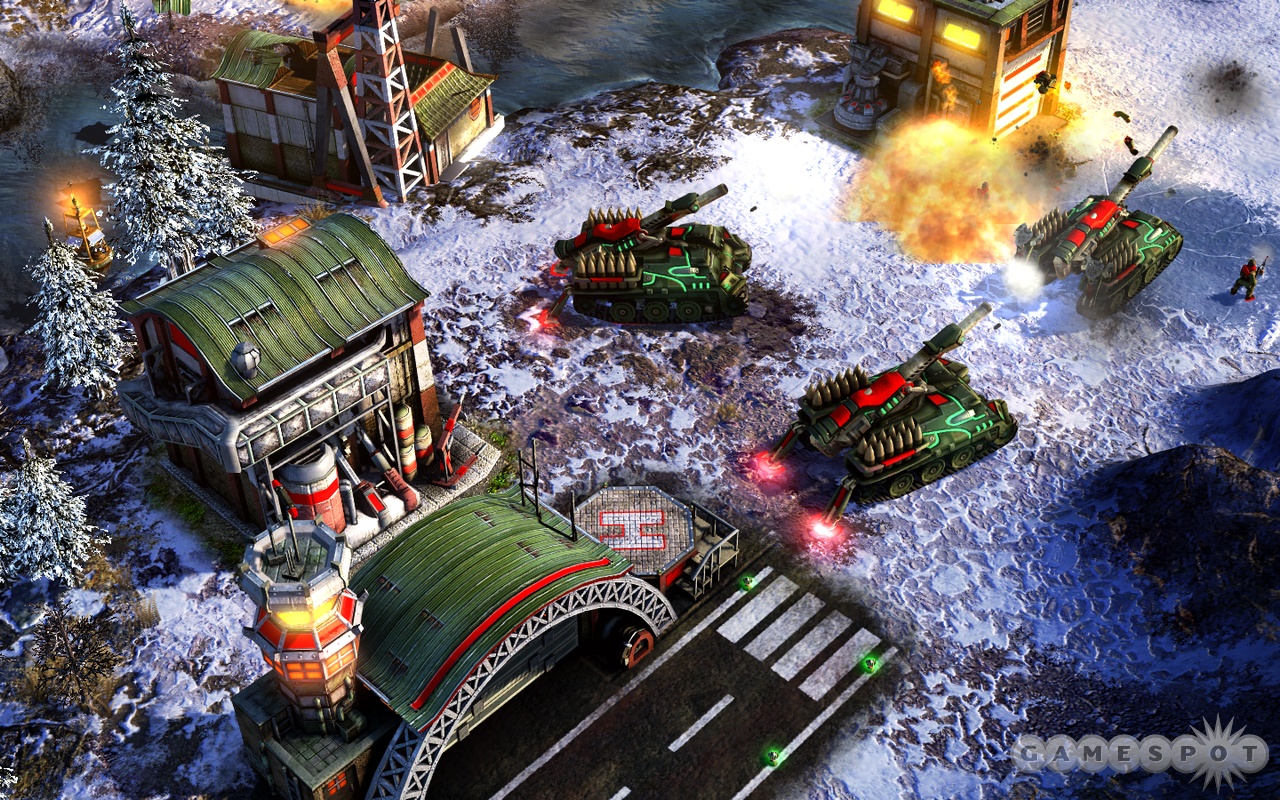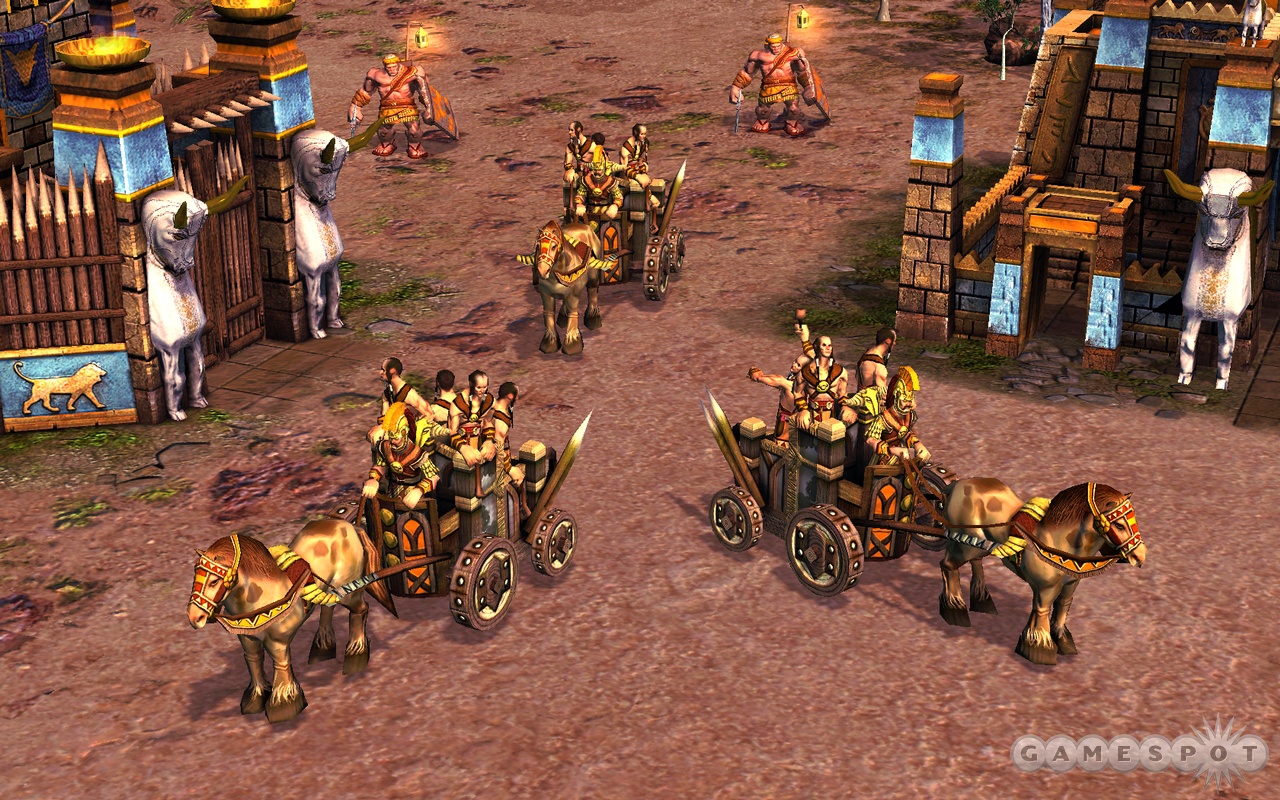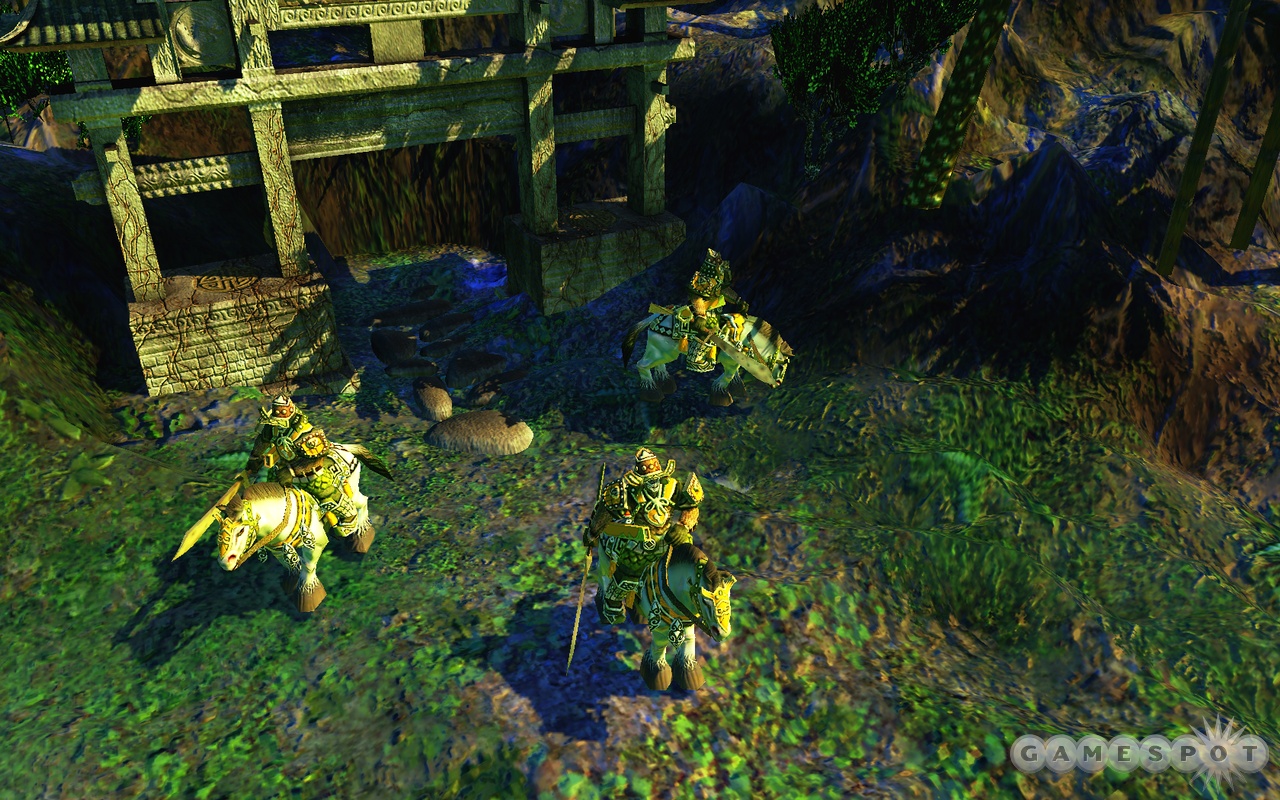Empire Earth III Updated Q&A - The Warring Factions
Creative director Jeff Brown discusses the playable factions in this upcoming strategy sequel.
Although real-time strategy games may have started out as simple exercises in gathering resources, constructing base buildings, and churning out armies of little soldiers to squash your enemies, they've come a long way. For instance, some games have attempted to chronicle the history of the world on into the future, such as the Empire Earth series, which is gearing up for its third installment later this year. The new version of Empire Earth will still encompass world history, from the past right on through to a sci-fi future, but it will do so with a streamlined interface, a new art style, and new playable factions. Creative director Jeff Brown explains.

GameSpot: There are three regional factions in Empire Earth III. We'll get into each one a bit later, but what was the thinking behind going with three regions?
Jeff Brown: One of the key things about Empire Earth III is that it has very distinct, unique, and totally different play styles for each of its three regional factions.
Instead of having a dozen or more factions that are basically the same outside of a couple of special units, focusing on three factions means that there are no shared units, abilities, or structures between any of the factions.
Everything is totally unique, and each faction has a unique empire-building mechanic and totally unique play style. This gives players a totally fresh look at the game each time they pick a new faction.
GS: Just because there are three regional factions doesn't mean there are just three factions, though, as there are separate factions in each region, such as England and France in the Western region. How do you differentiate those factions from one another? And how are they different from Empire Earth II's England and French factions?
JB: Correct, you can choose a subfaction within each region if you want. Selecting a subfaction starts you off with units and technology preresearched based around the subfaction you have chosen, allowing you to play a particular way that matches the historical flavor of, say, the British or the French.
You can also build your own subfaction using the civilization creator. This lets you use preset resource amounts to purchase technologies, units, and abilities before the game starts, allowing for completely custom starting factions that players can save and then use to play against each other in multiplayer or against the artificial intelligence in skirmish mode.
GS: Okay, let's cover the Western region. We know that it will have fewer but more-expensive units, reflecting the West's technological edge. What other details can you reveal about the Western region, and what sort of tactics will work best for it?
JB: The West focuses on quality over quantity. Its slower build times and more-expensive units can make it more costly to recover from a mistake, but this is countered by the fact that the faction's toughness gives it great survivability.
The Western player is best at defense, with robust walls, powerful towers, and massive fortresses. Players that like to sit back and defend until they have a powerful army, then burst forth and raze their opponents in one massive attack will love playing the West.
The West also features traditional builders that build structures and can repair damaged vehicles. And the West isn't just about "turtling" [hiding behind defensive walls]. In the late game, it has the most powerful single units and the best air power in the game.
GS: Next up is the Middle Eastern region, which we previously knew as a nomadic region in that it can literally pick up and move everything. Why go with such a design for this region? What else can you tell us about the Middle East?

JB: The Middle East faction is all about stealth and mobility. An opponent can scout your base, and by the time they attack, you can move everything to a new location, or rearrange critical defenses to throw off their attack.
The Middle East features lots of sneaky units, like the SCUD Missile, that aren't easily detected by the enemy, so you are best served by being mobile and attacking from unexpected directions with stealthy units. They also excel at hit-and-run tactics that can harass an enemy's economy.
The Middle East is quicker at expanding than the West, as it can build its structures anywhere, even in territories it doesn't own. This gives it the ability to approach opponents from unexpected directions, not just from its base. The Middle East builds all its structures as packed carts so that it can then move into position rather than having dedicated builder units.
The Empire Strikes Back
GS: Finally, there's Empire Earth III's Asian region. Let's get into the details on what the Asian-region factions can do.

JB: The Asian faction is all about numbers. Its units are cheap and can be built quickly, but the units themselves are individually weak and lack the mobility and stealth of the Middle East units. All Asian foot soldiers can build structures, giving them the ability to build without having to use dedicated workers.
The Far East's infantry is the faction's core. An Eastern player can research infantry units that are good against cavalry, infantry, buildings, even airplanes and tanks. In the midgame, massed infantry gunmen can be a powerful force, since these units' cheap cost and relatively good damage require area-effect attacks to counter.
GS: Each regional faction will also have a unique future technology. For instance, the Asians will have genetic-engineering capabilities to create frightening mutants. Could you get into that and the future technologies of the other regions?
JB: Future technology can get a little out there. Imagine people from the 1800s trying to live in our world today! All these future technologies have a lot of surprises in store for players, as their abilities and units bring a lot of new depth to the Empire Earth series.
The West centers around metal and computer technology, and features things like the earthquake gun, that literally shakes your opponent's base to bits, and the black hole gun, which creates a singularity in the midst of an opposing force, sucking them all into it until there is nothing left and it implodes into a single point.
The Middle East features units and structures that are a natural extension of what the forces in the region already look like. Advanced stealth techniques, phase tanks that exist only partly in this dimension, advanced standoff weapons of mass destruction, and mobile hybrid weapons reminiscent of something out of the Mad Max movies dominate the Middle East future.
The Far East has gone down the path of genetic experimentation, yielding units like the gastropod tank, which spits acid globules at its victims, and the giant Malaysian scorpion that stands as tall as a three-story building and packs quite a punch.
GS: What's your favorite faction, and why?

JB: It depends on the day. My general favorite is the West; I like the fact that it has powerful units that I can micromanage, since they are fewer in number. Sometimes I like to play the Middle East--the sneaky tactics can frustrate and confuse an enemy player pretty thoroughly.
GS: Finally, now that Empire Earth III's development is nearing completion, what's it feel like, and what's left to do on the project?
JB: All that's left on Empire Earth III is some bug fixing and last-minute balance tweaks. It's always nice to wrap up a project, seeing literally years of people's lives finally coming to fruition with a finished game. It's even nicer when the product of all that work is a game that plays as well and looks as good as Empire Earth III.
Got a news tip or want to contact us directly? Email news@gamespot.com
Join the conversation